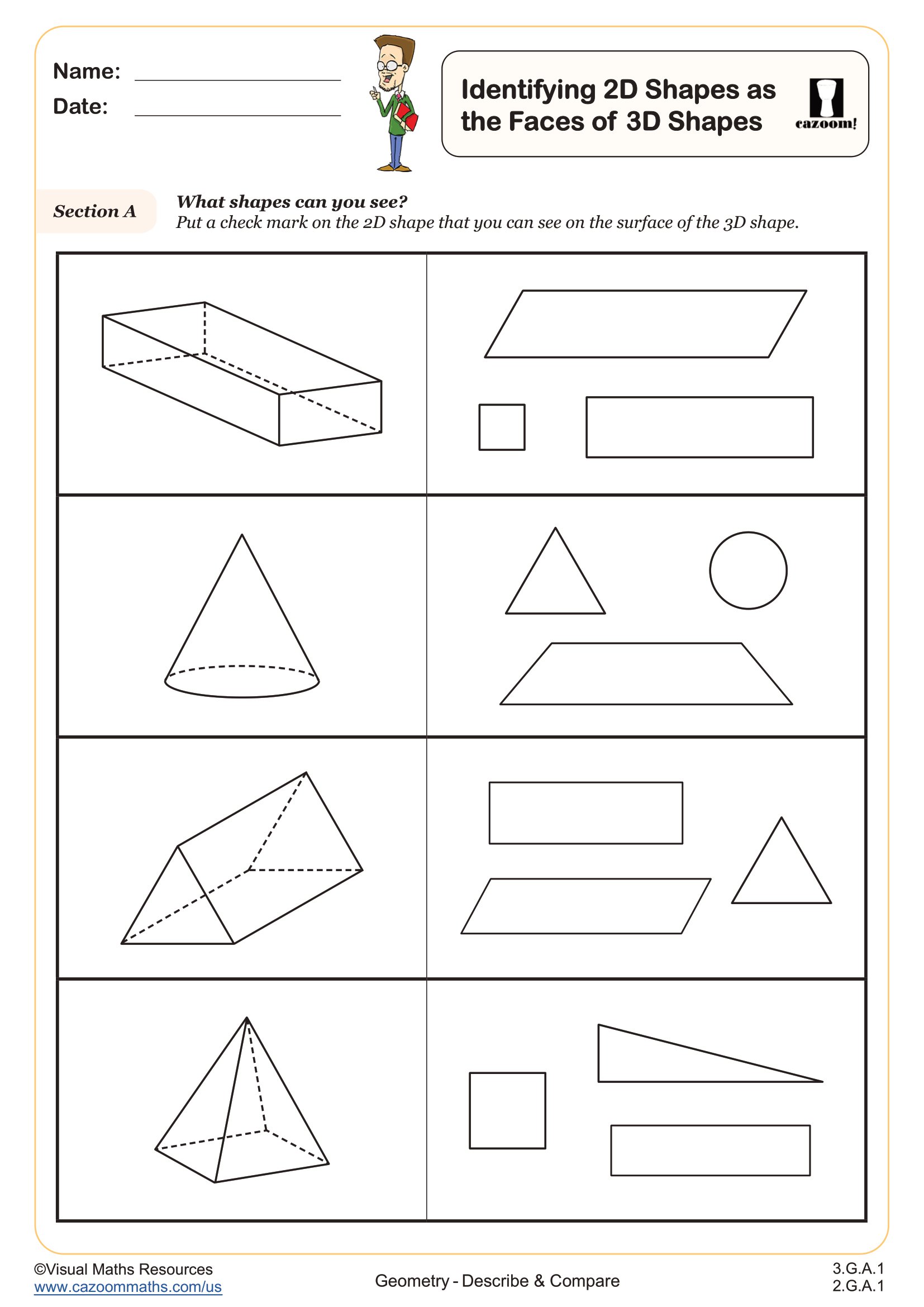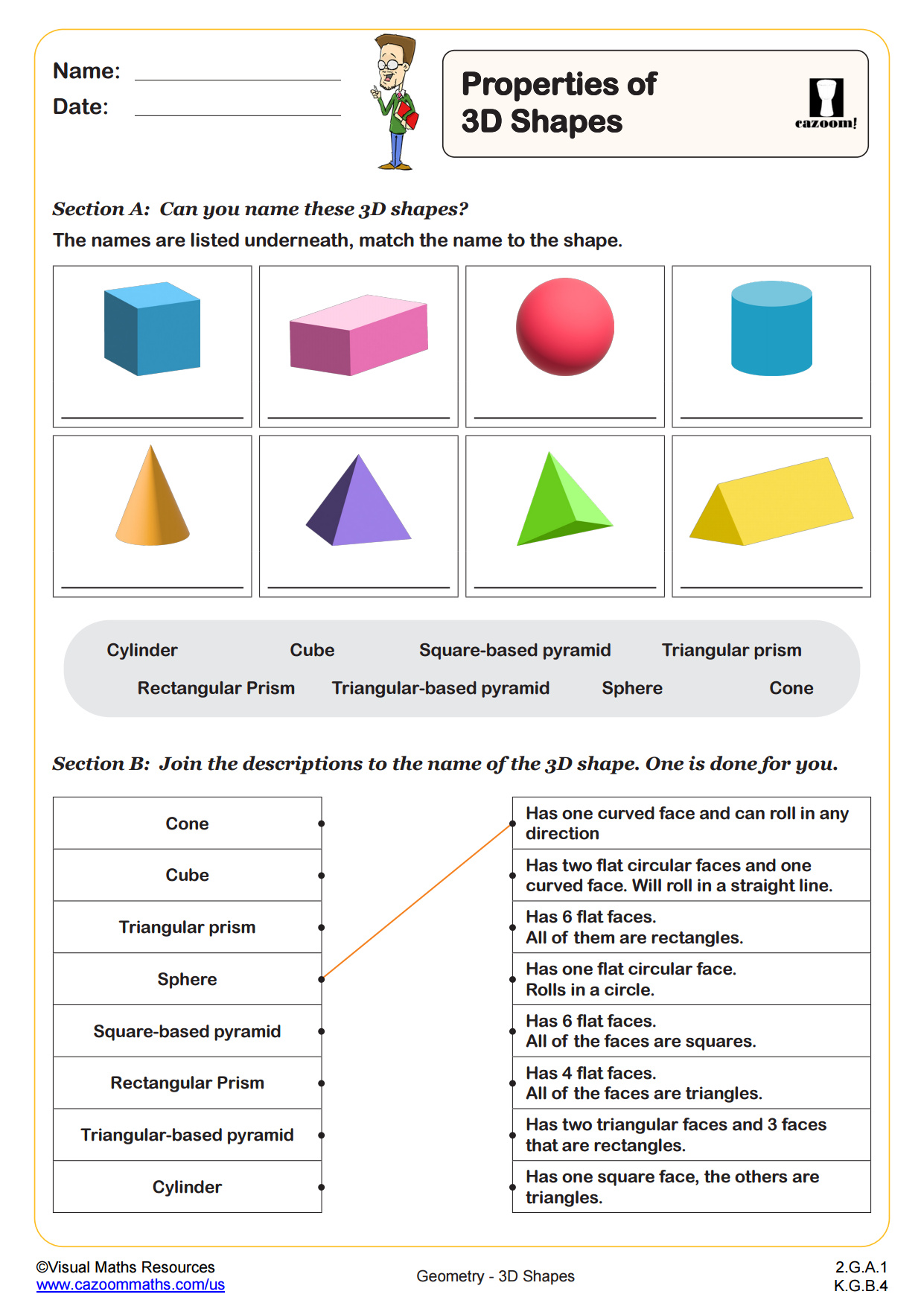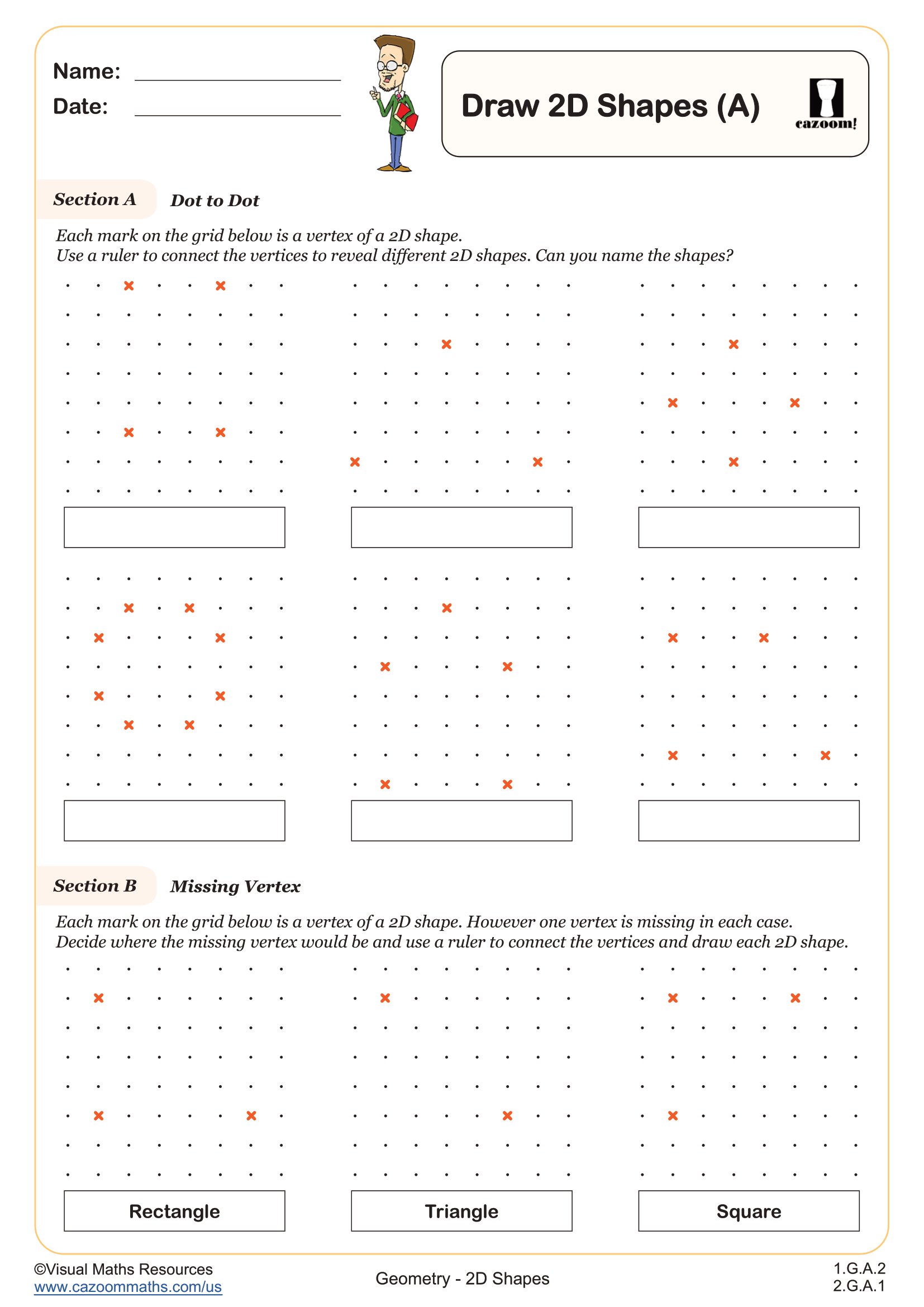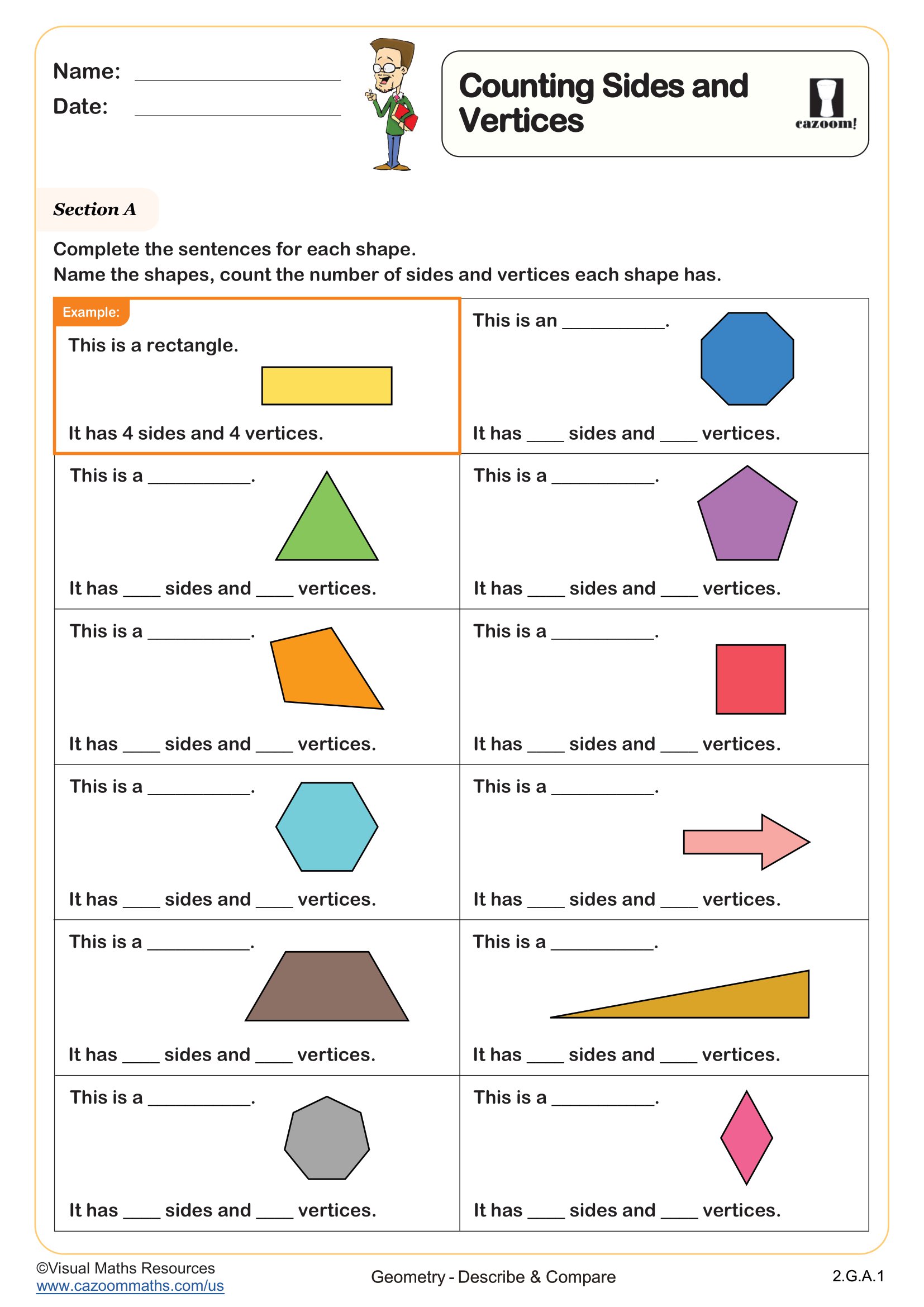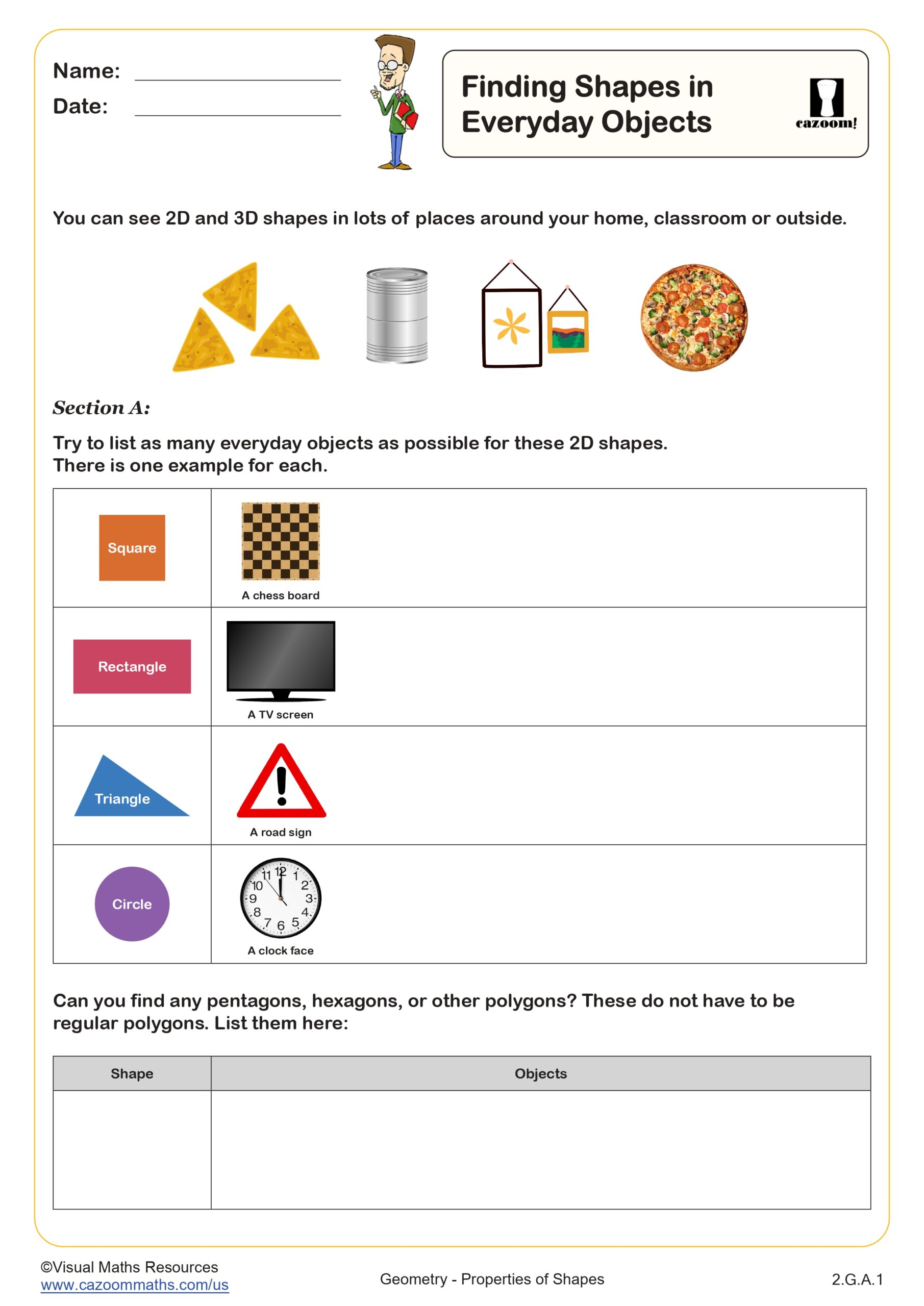Back to:
Identifying 2D Shapes as the Faces of 3D Shapes WORKSHEET
Suitable for Grades: 2nd Grade, 3rd Grade
CCSS: 2.G.A.1, 3.G.A.1
CCSS Description: Recognize and draw shapes having specified attributes, such as a given number of angles or a given number of equal faces.5 Identify triangles, quadrilaterals, pentagons, hexagons, and cubes.
Understand that shapes in different categories (e.g., rhombuses, rectangles, and others) may share attributes (e.g., having four sides), and that the shared attributes can define a larger category (e.g., quadrilaterals). Recognize rhombuses, rectangles, and squares as examples of quadrilaterals, and draw examples of quadrilaterals that do not belong to any of these subcategories.
Understand that shapes in different categories (e.g., rhombuses, rectangles, and others) may share attributes (e.g., having four sides), and that the shared attributes can define a larger category (e.g., quadrilaterals). Recognize rhombuses, rectangles, and squares as examples of quadrilaterals, and draw examples of quadrilaterals that do not belong to any of these subcategories.
Identifying 2D Shapes as the Faces of 3D Shapes WORKSHEET DESCRIPTION
Learners will identify 2-D shapes on the surface of 3-D shapes throughout this worksheet and use properties of shapes to guess shapes based on simple clues.
In Section A four 3D shapes are drawn alongside three 2D shapes, students will decide which of the given 2D shapes they can see on the surface of the 3D shapes.
Next, learners will name the 2D shape that is a highlighted side of a 3D shape. There are 6 questions to answer here.
Lastly, students play a game of guess who! Here they will use clues such as “I have 2 faces that are circles, what shape am I?” to name 3D shapes before being asked to write clues to describe a cone and a cube.
